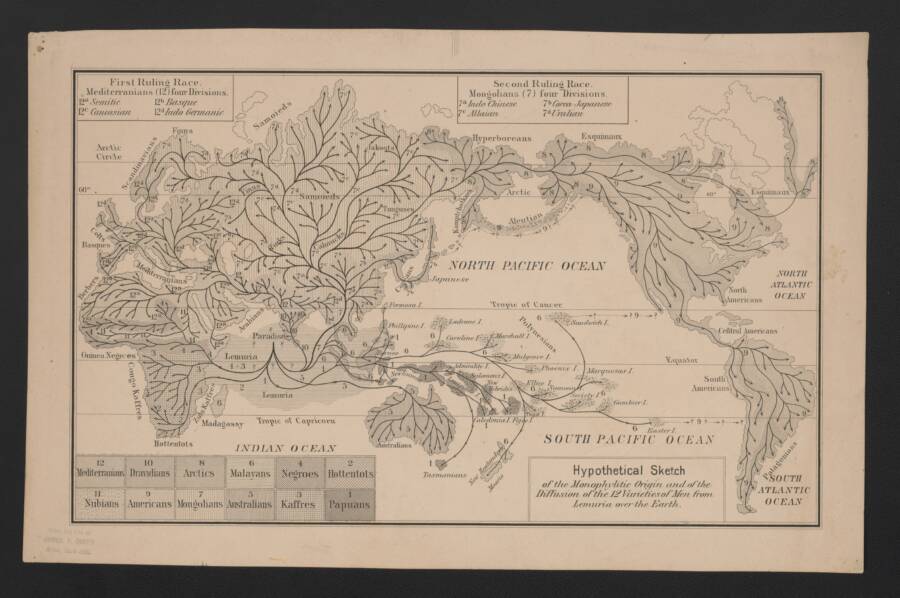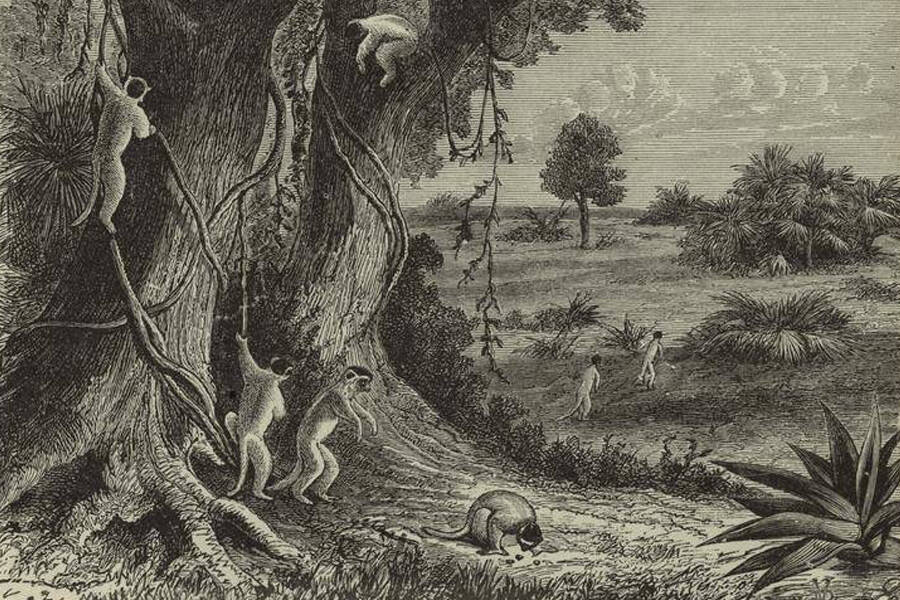Was The Lost Continent Of Lemuria Real?

Public DomainA hypothetical map of the landscape of Lemuria.
Stories of lost lands are nothing new. For centuries — as far back as ancient Greece — legends of the lost city of Atlantis have been told and retold — and even turned into animated films.
But while most of these fabled lands tend to lack any conclusive evidence, there is one that might have a shred of credibility: Lemuria, the sunken continent between India, Africa, and Australia.
Theories of Lemuria were popularized in 1864 after a paper titled “The Mammals of Madagascar” was published in The Quarterly Journal of Science, authored by British zoologist Philip Lutley Sclater. In his paper, Sclater suggested that because the lemur population of Madagascar outnumbers that of India and Africa, Madagascar must have been the animals’ original home.
Perhaps that theory itself wasn’t wildly groundbreaking, but what Sclater wrote next was.
He argued that the lemur must have migrated to India and Africa across a landform that no longer exists. He called this land “Lemuria,” and suggested that it was triangular in shape, touching the southern point of India, South Africa, and western Australia before it, inevitably, sank into the ocean.

Public DomainMany prominent scientists during Sclater’s time theorized that certain land bridges existed all over the world, allowing animals to migrate.
With the world of evolutionary science still largely in its infancy, Sclater’s theory gained some traction. Only a few years after Sclater’s original hypothesis, German biologist Ernst Haeckel began publishing works that cited Lemuria as the bridge that allowed humanity to migrate between Africa and Asia.
In 1870, Haeckel went a step further, writing, “The probable primeval home or ‘Paradise’ is here assumed to be Lemuria, a tropical continent at present lying below the level of the Indian Ocean.”
Once scientists learned that humanity likely originated in Africa and not, as previously believed, in Asia, theories regarding Lemuria fell more into the fringe, often becoming the subject of occultist writings and eventually pure fiction in comic books, novels, and films.

Edward Riou/New York Public LibraryA rendering of the ideal landscape of Lemuria.
Then, in 2013, researchers discovered granite fragments in the ocean south of India extending hundreds of miles south towards Mauritius — an island on which geologists had previously found zircon samples dating back three billion years, despite the island only coming into existence two million years ago.
This discovery led scientists to theorize that the zircon must have come from some other, far older continent that sank into the Indian Ocean. They didn’t call it Lemuria, however, but Mauritia.
And while their findings don’t exactly line up with Sclater’s original theory — lemurs originated roughly 30 million years after Mauritia sank — they do show that a land mass did once exist in that region and was lost to time.





